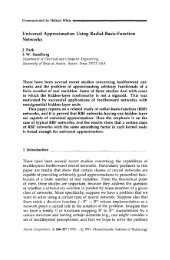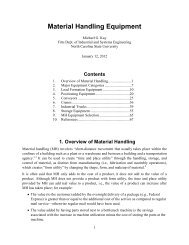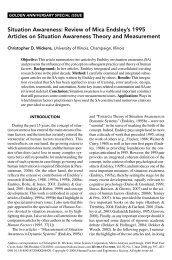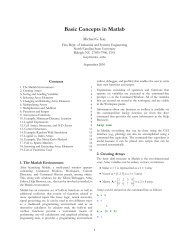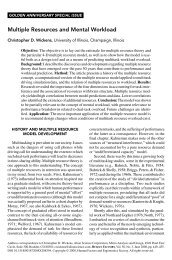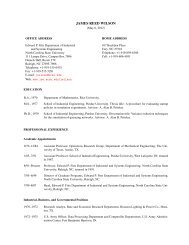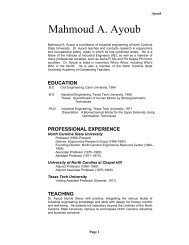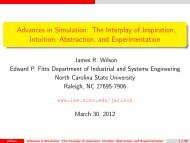Conventional Machining Methods for Rapid Prototyping
Conventional Machining Methods for Rapid Prototyping
Conventional Machining Methods for Rapid Prototyping
Create successful ePaper yourself
Turn your PDF publications into a flip-book with our unique Google optimized e-Paper software.
16<br />
Z. Yang, R. A. Wysk, S. Joshi, M. C. Frank ,and J. E. Petrzelka<br />
The major limitations are whether 1) the material properties will be suitable replacements<br />
of virgin plastics or the metal alloys <strong>for</strong> the design and 2) whether the dimensional or<br />
surface characteristics are sufficient <strong>for</strong> fit and functional use.<br />
The two processes being developed in the laboratory can be compared and<br />
contrasted against the brief list of process discussed above. The difference is that both<br />
CNC-RP and WEDM-RP are being developed <strong>for</strong> rapid manufacturing firstly. In most<br />
cases of rapid prototyping the additive methods are superior; however, we contend that<br />
modified conventional methods will have the advantage of a starting point much closer to<br />
functional parts by their very nature, similar to the layer based nature of additive RP and<br />
its ability to create prototypes.<br />
CNC-RP uses three-axis CNC milling with 4 th axis indexing; hence it is a<br />
conventional subtractive fabrication process, albeit with a rapid approach to process<br />
planning. Unlike the additive processes, the geometric capability of CNC milling is<br />
limited by surface accessibility. Hidden portions of geometry cannot be manufactured by<br />
CNC-RP. On the other hand, CNC milling can fabricate a large variety of materials. It<br />
can handle the majority of metals, and some plastics and ceramics. As a mature<br />
manufacturing process, CNC milling can easily achieve ±0.002 inch accuracy in many<br />
materials.<br />
WEDM-RP uses six-axis wire EDM as a fabrication process. The material is<br />
removed by spark discharges created between the workpiece and wire electrode. This<br />
cutting approach limits the material flexibility of wire EDM to electrically conductive<br />
material. Furthermore, the geometric capability of wire EDM is limited by tangent<br />
visibility and process accuracy of wire EDM is moderate. On the other hand, wire EDM<br />
also has several advantages. Wire EDM is the capability to cut any electrical conductive<br />
material regardless of the hardness of the material and the cutting <strong>for</strong>ce is negligible.<br />
These advantages make wire EDM a RM candidate <strong>for</strong> manufacturing metals like<br />
titanium, stainless steel, and cobalt alloys.<br />
The comparison of different processes <strong>for</strong> various engineering constraints:<br />
geometric capability, accuracy, and material flexibility, are summarized in Table 1.<br />
Table 1 comparison of different process<br />
RP/RM<br />
Technology<br />
SLA<br />
SLA/Polyjet<br />
FDM<br />
Solidscape<br />
SLS<br />
Geometric<br />
capabilities<br />
Good, supports can<br />
be difficult to<br />
remove<br />
Excellent, easy to<br />
remove supports<br />
Very Good, limited<br />
if not water soluble<br />
supports<br />
Very Good, easy to<br />
remove supports<br />
Very good, some<br />
issues in power<br />
removal<br />
Accuracy<br />
Good, but Limited<br />
in z direction<br />
Very Good to<br />
Excellent, small<br />
layer depths<br />
Good, limited by<br />
large layer depths<br />
Very Good to<br />
Excellent<br />
Good to very good<br />
Material flexibility<br />
Resin, limited set of<br />
materials<br />
Resin, limited set of<br />
materials, but<br />
includes multimaterials<br />
and some<br />
elastomers<br />
Good plastic choices<br />
Limited to low melt<br />
plastics,waxes<br />
Mostly plastics,<br />
coated metals and<br />
sand



